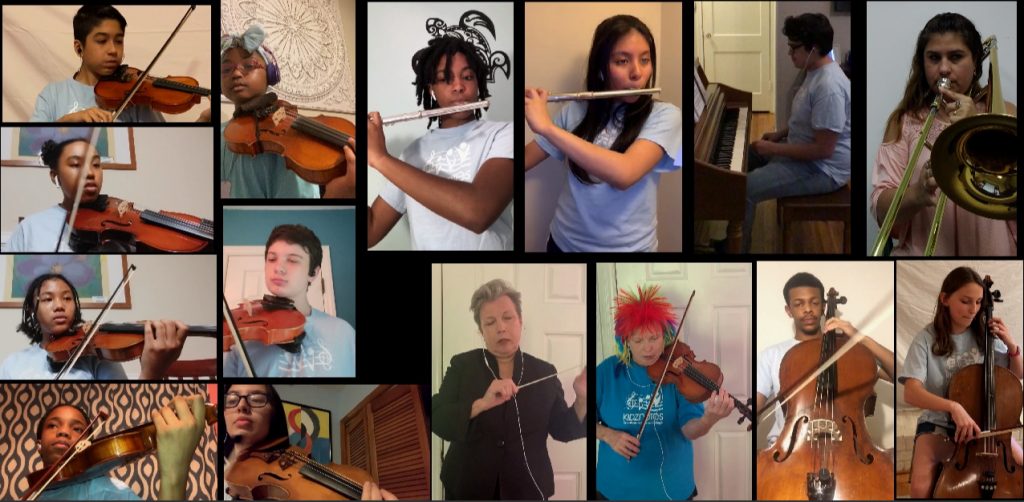A retired music teacher friend, Ruth Johnsen, needed help setting up a virtual performance by her music students. Because I was eager to learn a new video editor and because it’s really impossible to say no to Ruth, I stepped up and took it on. For the past few weeks, videos from each musician has been filtering over to me and I’ve been learning all I can about stitching them together. Fortunately, the occasional karaoke videos I’ve created have given me a little insight into the best way to get this done. Here’s my recipe for successfully recording musical parts for a virtual performance.
Consistency is key. The video clips I was given all look and sound different. That’s to be expected from so many musicians and no way to use identical hardware and software. There are some aspects that can be easily standardized, such as:
Video orientation. Have everyone use either portrait or landscape mode. It will look much better. Purists insist on landscape but portrait can work, too. Whichever you choose, it’s best if everyone uses it.
Distance. Be consistent with camera distance. If your phone or camera is too close, you will overwhelm the microphone; too far and you won’t be heard at all. You’ll also make work for the video editor as she has to scale or crop the video to make everyone look consistent.
Use the same gear. For the ultimate in quality, figure out a way that all musicians can use the same equipment. Mail or ship a common microphone or other recording gear to each musician and have them set it up the same way. Your ears will thank you.
Use a click track. Have a track in which the conductor conducts and calls out the measures along with a metronome. This will become the foundation for all of the mixing. Also, when creating the click track the editor’s job becomes much easier if you provide an audible and visual cue of that synchronization. Ruth and her students counted to four and said “click.” A few beats later the music began. This method works well enough but since this performance is prerecorded, you should take advantage of editing! Record a 10 second long or so prelude to the music where everyone’s hands start empty. On cue from the conductor’s click track, everyone counts to four and then claps on camera! They then pick up their instruments in the remaining seconds and play their parts. Your musicians are now human clapper boards, providing a powerful sync signal for your editor to work with.
No, really, use the click track! Have the musicians wear headphones/earbuds while listening to the click track. It’s easy for the beat to get lost when you’re the only one playing. Some musicians winged it and got completely out of sync, making their hard work practically unusable.
Work around sync issues. There were cases where the videos submitted by some musicians just wouldn’t stay in sync. Many phones are different in how they record audio and video. In a few cases I had to ask some musicians if they could rerecord using a different smartphone. This seemed to help.
Post your resulting videos to a cloud storage system like Google Drive and share them with your editor.
For my video editing, I found Shotcut to be very powerful, fast, and stable. I was easily able to crop, scale, and resize each clip into one happy screen filled with musicians. Going into the details of video editing is several posts in itself so I won’t go into that here. Luckily, Shotcut has many tutorials on YouTube and elsewhere that show you how this is done. After a little while of using Shotcut, I found many of its features to be pretty intuitive.
Now, one of my first jobs was as a recording engineer. I want my videos not only to look good but to sound good, too. Video editing software may get you close to the good sound you’re seeking but if you really want to squeeze the best sound out of your editing consider using and audio editor. I use Audacity for my karaoke videos, which allows me to mix everything exactly the way I like it. Then I lip-sync to this track in my videos and mix it all together. For the best virtual performance, you’ll get the best result if you treat the audio and video as separate pieces, each to be perfected in its own right.
These tips should get you started towards some great virtual performances. If you make a video and found my tips useful, I’d love to see your work! Happy playing and editing!
